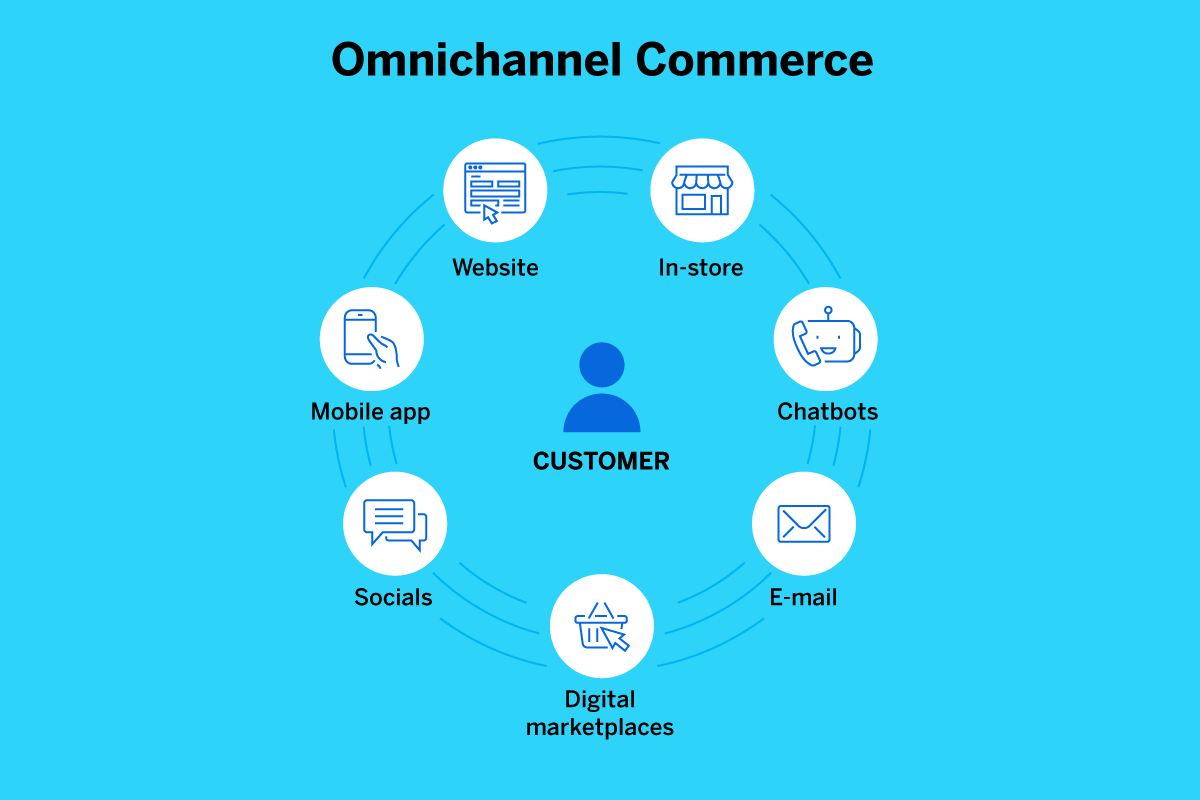Update Your Operating Model for Omnichannel World

With the advent of e-commerce and its subsequent success, consumers shifted the bulk of their shopping to online platforms. Consequently, businesses scrambled to integrate their various channels to provide a seamless consumer experience.
This is the birth of an omnichannel world. In this age, organisations across industries, including finance, healthcare and retail, are moving toward omnichannel marketing strategies.
Even though they shifted to omnichannel strategies, many businesses still needed to produce desired outcomes. As a result, the impact on the profit, loss and balance sheets is limited.
One explanation is their oversight in not updating their supply chain operating model to keep up with the changing times. Evolving your operating channel for omnichannel world is the key to success.
About the Omnichannel World

Omnichannel marketing has been gaining momentum ever since e-commerce took off. And this called for incorporating online channels into the offline ones to provide consistency for the consumer experience.
A study by the Harvard Business Review found that 73% of consumers prefer shopping through multiple channels. Therefore, your company must integrate the different channels it uses to interact with customers to preserve brand uniformity.
Omnichannel commerce is a consumer-centred approach, but it has numerous benefits for both sides of the supply chain.
Customers have access to a wealth of information. While shopping in a physical store, they can subsequently look up details about the product on the web. Moreover, there are always chances for better prices and offers. Some of the other perks are size charts, easy returns, and same-day deliveries.
Omnichannel enables your business to create an identifiable brand. The multiple touchpoints in your business increase revenue and work wonders for customer loyalty and retention. Furthermore, they also drive sales towards your offline store.
To fully reap the benefits of the channel, you need to update your operating model simultaneously.
How to Update Your Operating Model
An operating model is a representation of the functioning of an organisation. Additionally, it includes its plans for profit-making and the value it provides to its customers.
Owing to the changing world, operating models need to evolve and keep up for continued profits. While implementing omnichannel strategies, you should also improve operating models simultaneously.
While you update your model, here are some elements you could look into:
Allocating Resources for Data Collection and Analysis Technologies
An omnichannel strategy can only be used to its full potential when you keep track of your customers' behaviour. Their shopping history and preferences need to be documented and analysed.
This allows for personalised recommendations. Personalised content is of utmost importance to attract a customer's attention in the deluge of information on the web. A study revealed that 72% of customers only engage with personalised content. Moreover, according to Salesforce, customers are more likely to consider personalised offers necessary.
Customer journey mapping is an indispensable part of targeted campaigns. Knowing a customer's movements, from learning about your brand to purchasing it, helps expand your customer base.
You need to follow your customer across all touchpoints, from reviews on your website to social ads. Then there’s window shopping, and finally, buying from your store.
Feedback collection and incorporation into decision-making will allow you to serve the customer's interests better. Data collection technologies facilitate large-scale feedback collection. The analysis of the collected data helps identify common pain points.
Additionally, data collection and analysis enable more efficient product inventory across platforms. This will help in completely transforming your supply chain to function at an optimum level. Also, restocking mistakes will be avoided, and waste will be reduced.
In short, the growth of operating models definitely involves investing in technologies for data collection and analysis. For instance, today's AI platforms go a long way toward educating you on consumer statistics.
At GrowthJockey, we identify precisely what your business needs. We help you take your business to the next level by connecting you with the necessary technological resources.
Boosting Communication Channels Between Various Teams
Integration of channels is the primary aspect of omnichannel commerce. However, various organisations fail to do this effectively. This is more often than not due to a lack of information flow between the teams that handle multiple channels.
Customers start their purchases on online platforms and finish them in offline stores. For instance, Best Buy observed that many customers at their offline stores already had items of interest in their carts in the online store.
So, they started sending notifications to the shoppers' mobiles, letting them know that the products in their cart were available in the offline stores. A strategy like this requires a strong link between the online and offline channels.
Another benefit of this link is that you can customise offline stores to match your online ones. As customers find the features of an online store appealing, applying those to offline stores might make customers more comfortable and drive sales. One way of doing this is by home-delivering purchases.
According to a survey, in 2021, 56% of online shopping happened on mobile platforms. Therefore, creating a mobile app for your brand is a must. Most importantly, ensure that the app reflects your website's user interface for brand consistency.
An expert tech team is a necessity in this whole endeavour. Communicating the needs of the management to the human resources team will ensure demand-appropriate recruitment.
Quick deliveries are one of the reasons customers love online shopping. So, the delivery teams need to be highly responsive and well-organised.
You should outsource this part of the supply chain like Amazon is doing with their Amazon Relay program. Then, you need to ensure that the external partners are adequately integrated into your company's systems.
Marketing Strategy
Omnichannel advertising combines traditional methods with emerging ones. For instance, you could advertise your product through email offers and social media messages while promoting it through physical stores.
In such a scenario, it is crucial to circulate the same message through all these platforms to maintain a cohesive brand image. Moreover, new products need to be introduced across channels simultaneously.
The marketing and advertising services we offer at Growth Jockey take all the recent trends into account. We market your brand with a strategy optimised for omnichannel commerce and eliminate any disconnect.
Know Your Customer
Omnichannel is a consumer-centric approach. Success in implementing it will only be possible by updating your operating model to prioritise customers.
This requires a change in the structure of governance. Moving from the traditional, internal, skills-focused system ensures you better serve the clients' interests.
This might be difficult to achieve as it requires a change in a long-standing mindset. Years of excellence-driven operations and branding need to be slowly dismantled in favour of prioritising the customer across all functions.
Even before launching the product, researching the target customers' behavioural trends helps customise to their needs. Also, it increases the chances of the product's eventual success.
Wrapping Up
The dynamic world never fails to astonish with the rate at which it churns out new trends and technology. Keeping up with these and evolving accordingly is fundamental, especially if you are an entrepreneur or just anyone looking to succeed.
The characteristics of the customer base change as the world does. The COVID-19 pandemic intensified this ongoing change and changed customer preferences forever. Digital channels are more important than ever, while in-person shopping remains relevant.
To meet these new demands, businesses must update and grow with operating models to stay on top of the tide. They must equip themselves to provide customers with a smooth experience across all channels. Being open to alterations and modifications in existing operations will ensure success, no matter the barriers.
At GrowthJockey, we are fully committed to developing customised operating models that effectively address the critical challenges faced by our clients across various industries. Irrespective of your company's size, whether it's a small-scale enterprise or a large corporation, you can now benefit from our tailored solutions.
Take the decisive step towards unlocking the next level of growth for your brand by reaching out to us today!








